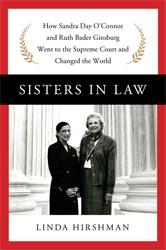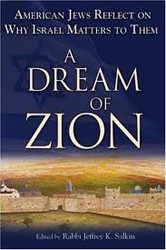The Story Behind the Story: Speaking of Jews
By Lila Corwin Berman
Growing up Jewish in Poughkeepsie, New York, I found it an almost daily task to explain what it meant to be Jewish to non-Jews. Had I not kept kosher, I might not have felt the imperative of self-explanation so strongly. But perhaps I would have: I recall a classmate in fourth grade, the other Jew in my class, explaining that he was removing the bun from his school-lunch pork hot dog because he was Jewish and Jews do not eat bread on Passover. What I started to notice, even as a child, was that the way I explained what I did (why I would not eat a certain food, why I was missing school on a particular day and so on) changed across time and space and that, on some level, those explanations changed me as well.
My book Speaking of Jews emerged from my longstanding interest in how difference demands explanation and how explanation can reframe difference. I wanted to understand what changed and what remained constant about Jews’ public explanations of themselves from the Roaring Twenties through the Civil Rights Movement.
I started by thinking about marriage, not the so-called intermarriage crisis that demographers and Jewish leaders pronounced in the 1970’s, but rather what we might call the inmarriage crisis. How did early to mid-century Jews explain the fact that they overwhelmingly married other Jews at the same time that many of them agitated for greater acceptance into mainstream American society? What I found was an extraordinarily rich discussion about who Jews were and what America was. And in tracking that discussion through sermons, radio addresses, newspaper articles, and conferences, I discovered what I term a “socialscientific turn” in how Jews talked about themselves. As early as the 1920’s, public Jewish figures gravitated toward the social sciences as the proper language to explain what made Jews different from other Americans, for example, their marital patterns. But they also employed that same language to categorize Jewish difference as consonant with mainstream American patterns, for example by explaining that all Americans tended to marry people who were most similar to them.
I came to find that from the 1920’s to the 1950’s, a language of sociological Jewishness developed — that is, a way of explaining Jewishness as a social fact that distinguished Jews from non-Jews but in expected and entirely American ways — and that it pervaded countless realms of American and Jewish life. In the early stages of my research, I had made my way to Harvard, where I met Oscar Handlin, the venerable dean of immigration history, and Nathan Glazer, a sociologist and public intellectual. These two men had helped sculpt an “American ethnic pattern,” a historically and sociologically informed theory that all Americans had membership in distinctive groups but that the differences these groups maintained from one another were remarkably similar and made them all part of the American cultural fabric. Their ideas were about re-envisioning an America that was open to diversity. At the same time, both men were deeply and personally committed to re-envisioning Jewishness in sociological terms that not only harmonized with American diversity but, on some level, epitomized it.
Echoing in my mind as I talked to Handlin and Glazer were thewords of Milton Steinberg. A Conservative rabbi who had died at a young age in 1950, Steinberg had once been attracted to sociological Jewishness. Yet as he neared the end of his life, plagued by heart problems, he came to doubt that a sociologically-inflected Jewishness could answer the ultimate questions that gripped him. He yearned for a Jewishness that could “inform us concerning the nature of things in a manner which we could not derive from any other science or human discipline.” Where were God and transcendence and eternity in a system that had become so tied to human categories?
Speaking of Jews concludes that starting in the 1960’s sociological Jewishness began to falter as an explanatory mode for Jews. The withering of sociological Jewishness was not a result of Jews taking Steinberg’s criticism to heart. Rather, the sociological terms of Jewishness appeared flimsy as the lived lives of Jews came more and more to resemble non-Jews. This is why I write about Marilyn Monroe and Arthur Miller’s marriage. If a woman who had come to represent, as Norman Mailer once wrote, the “great American body” could not only love a Jew but also become one, then just how meaningful was the sociological distinction between Jews and non-Jews?
As I finished writing the book, I started a new project researching Jews’ migration away from urban America and their efforts to reconcile their political ideals, especially about race and integration, with their behavior. One thing I have found is that post-war Jews felt incredibly anxious about leaving the city, even as they were seduced by the suburban dream. How to explain this anxiety? Could it be that Jews, on the brink of leaving urban space, also realized that they were leaving behind the sociological distinctions that had governed the gap between Jews and non-Jews, and that had made it seem natural and right for Jews to marry other Jews? What would replace sociologically and geographically grounded Jewishness? In recent years, some critics, prone to doom and gloom pronouncements, have argued that nothing, save total assimilation, will replace it. Others have taken note of creative efforts to re-ground Jewishness, in new spiritual frameworks, in new notions of community, family, and residential life, or in new commitments to ethical ideals.
Historians always have a pass when it comes to questions about the future: this is not what we study. But in the leap of faith it takes to put pencil to paper, to commit one’s words to a publisher, to send a book out into the world, we imagine a future that might, in some small measure, be shaped by what we write. This is not a modest goal, but it is an honest one, I think. And so I end, in some senses, where I began: with a belief that to explain oneself or one’s community is a generative and, hopefully, unending act.




